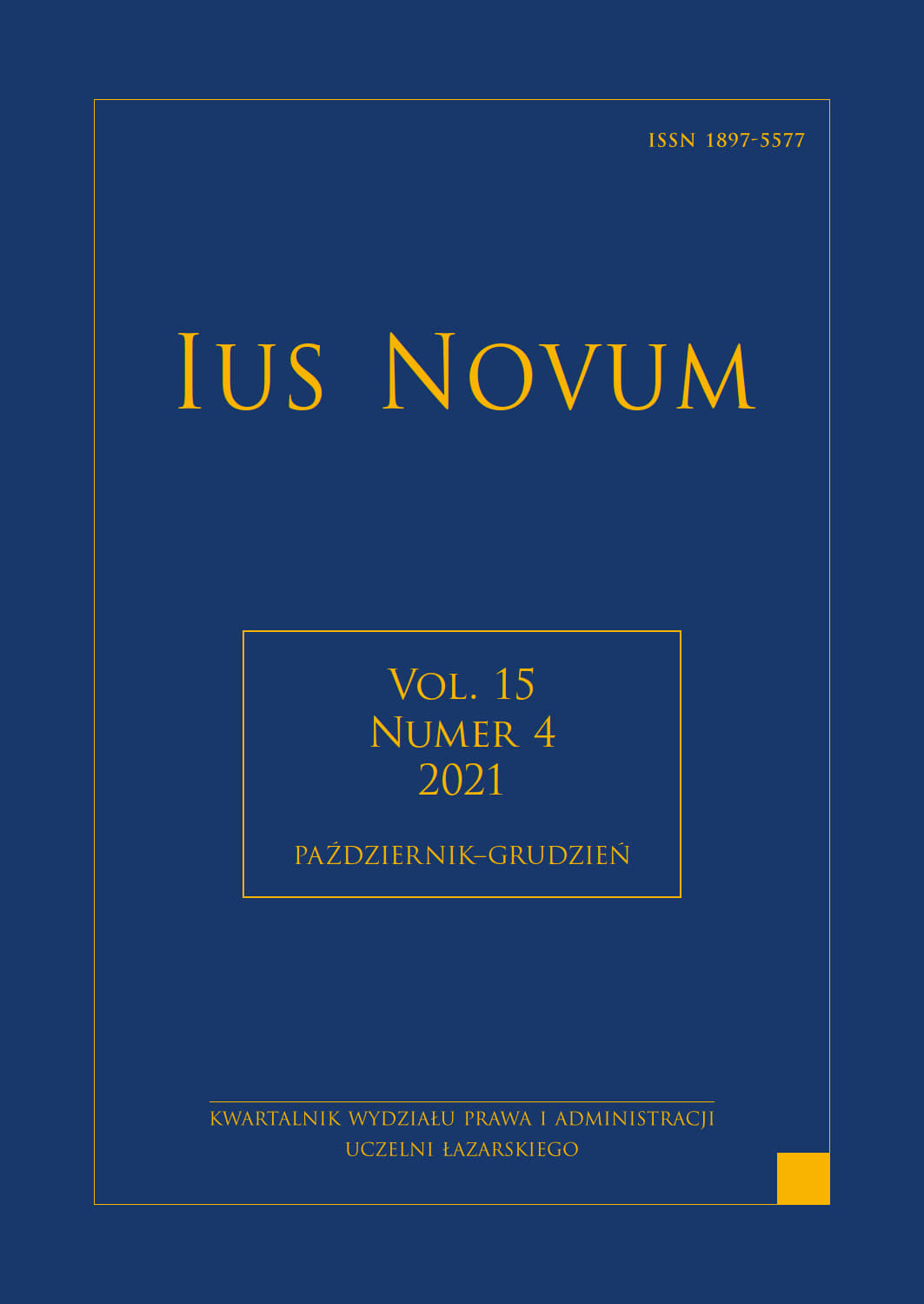Abstrakt
Niniejszy artykuł stanowi próbę syntezy przestępczości z użyciem noża w Anglii i Walii. Celem opracowania jest nie tylko przedstawienie zjawiska przez pryzmat istniejących regulacji, sys-temu prewencyjnego oraz badań wyjaśniających obecność zjawiska, ale również zachęcenie do przyjrzenia się bliżej zjawisku w Polsce. Przeprowadzone badania pozwoliły ustalić, że szczątkowe dane dotyczące polskiej rzeczywistości uzasadniają potrzebę pogłębienia wiedzy poprzez przyjrzenie się sposobom rozwiązywania problemu przez anglosaskie środowisko i ewentualnemu rozszerzeniu prowadzonych przez państwo statystyk
Bibliografia
Allen G., Kirk-Wade E., Knife Crime in England and Wales,House of Commons Library, Number S4304, 6 October 2020.
Allen G., Audickas L., Loft P., Bellis A., Knife Crime in England and Wales, Briefing Paper, SN 4304, House of Commons Library, 20 September 2019.
Bailey L., Harinam V., Ariel B., Victims, Offenders, and Victim-offender Overlaps of Knife Crime: A Social Network Analysis Approach Using Police Records,„PLoS ONE” 2020, vol. 15 (12), December.
Barrington-King P., Knife Crime Select Committee Report, October 2019, Kent County Council.
Bradford B., Tiratelli M., Does Stop and Search Reduce Crime?, „UK Justice Policy Review FOCUS” 2019, iss. 4, Centre for Crime and Justice Studies, February.
Berkowitz L.,The Concept of Aggressive Drive: Some Additional Considerations, „Advances in Experimental Social Psychology” 1965, vol. 2, Wisconsin.
Cabaj J., Precedens jako element system kultury, common law, „Ius Novum” 2008, nr 4.
Dankiewicz A., Przestępstwa konwencjonalne wśród polskich nastolatków. Wyniki ogólnopolskiej diagnozy skali i uwarunkowań krzywdzenia dzieci, w: Dziecko krzywdzone, Teoria, badania, praktyka, „Fundacja Dajemy Dzieciom Siłę” 2019, vol. 18, nr 3.
Drew L.N., Armitage R., Hillman R., Sheridan K.J., Farrugia K.J. (red.), On a Knife Edge: A Preliminary Investigation of Clothing Damage Using Rounded-tip Knives, „Science & Justice” 2020, vol. 60, no. 6.
Eades C., Grimshaw R., Silvestri A., Solomon E., ‘Knife Crime’. A Review of Evidence and Policy,Centre for Crime and Justice Studies, King’s College London, London, December 2007.
Grimshaw R., Ford M., Young People, Violence, and Knives – Revisiting the Evidence and Policy Discussions, „UK Justice Policy Review Focus, Centre for Crime and Justice Studies” 2009, iss. 3.
Hołyst B., Zabójstwo: studium kryminalistyczne i kryminologiczne, Warszawa 1970.
https://www.legislation.gov.uk/ukpga/Eliz2/7-8/37/contents
https://www.legislation.gov.uk/ukpga/1988/33/contents
https://www.legislation.gov.uk/ukpga/1996/26/contents
https://www.legislation.gov.uk/ukpga/1997/21/contents
https://www.legislation.gov.uk/ukpga/2006/38/contents
https://www.legislation.gov.uk/ukpga/2019/17
https://www.ons.gov.uk/aboutus/transparencyandgovernance/freedomofinformationfoi/knifecrimedata
Łągodziński S., Sądowo-prokuratorska praktyka ścigania karnego przestępstwa zabójstwa, „Prokuratura i Prawo”2016, nr 11.
Łosińska M., Kobieta jako sprawczyni zabójstwa – analiza kryminologiczna i kryminalistyczna, „Przegląd Prawniczy Ekonomiczny i Społeczny” 2013, nr 1.
Majchrzyk Z., Kiedy kobieta zabija. Motywy, osobowość, relacja sprawca – ofiara, strategie obronne, Warszawa 2009.
Massey J., Sherman L.W., Coupe T., Forecasting Knife Homicide Risk from Prior Knife Assaults in 4835 Local Areas of London, 2016–2018, „Cambridge Journal of Evidence – Based Policing” 2019, April.
Orlik M., Access All Areas?, „New Law Journal” 2020, 29 July, iss. 7897.
Ramshaw N., Charleton B., Dawson P., Youth Voice Survey 2018, MOPAC Evidence and Sight.
Sampson L., Getting Real with Knives and Guns . Covering Laws, Gang Culture, Music & Social Media Influences, Prevention Strategies and Much More, London, 2021.
McShane J., Knife Crime, Underworld UK, Glasgow 2010.
Traynor P.R., Closing the Security Gap, Young People, ‘Street Life’ and Knife Crime, The University of Leeds, School of Law, July 2016.
Van Dijk J.J.M., Manchin R., van Kesteren J.N., Hideg G., The Burden of Crime in the EU: A Comparative Analysis of the European Survey of Crime and Safety (EU ICS 2005), Gallup Europe, Brussels, 2007.
Williams E., Squires P., Rethinking Knife Crime: Policing, Violence and Moral Panic?, Basingstoke, 2021.
Wood R., UK: The Reality Behind the ‘Knife Crime’ Debate, Race and Class, London 2010.
Youth Select Committee, Our Generation’s Epidemic: Knife Crime, 2019.
www.bailii.org/ew/cases/EWHC/Admin/2003/245.html
